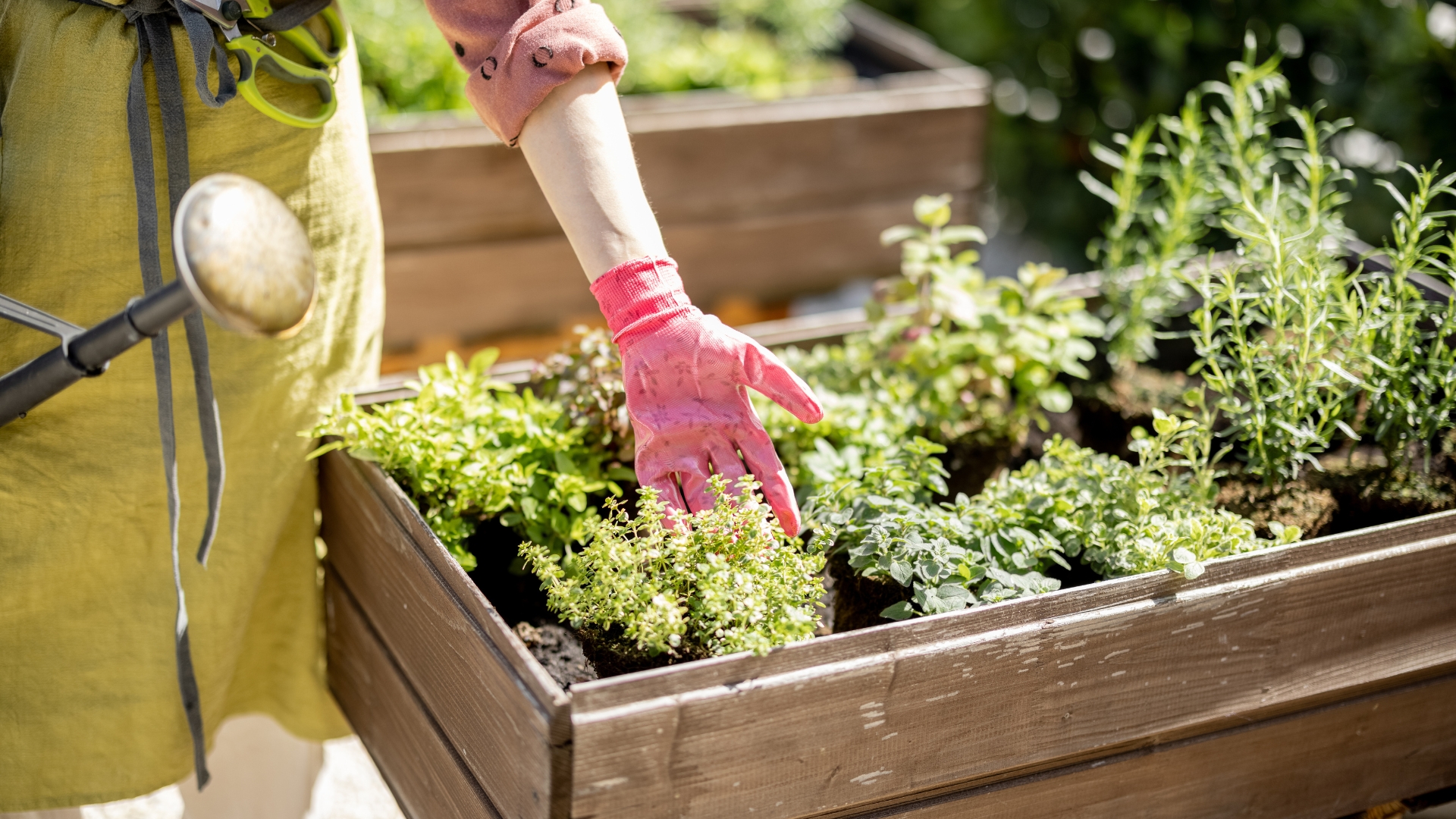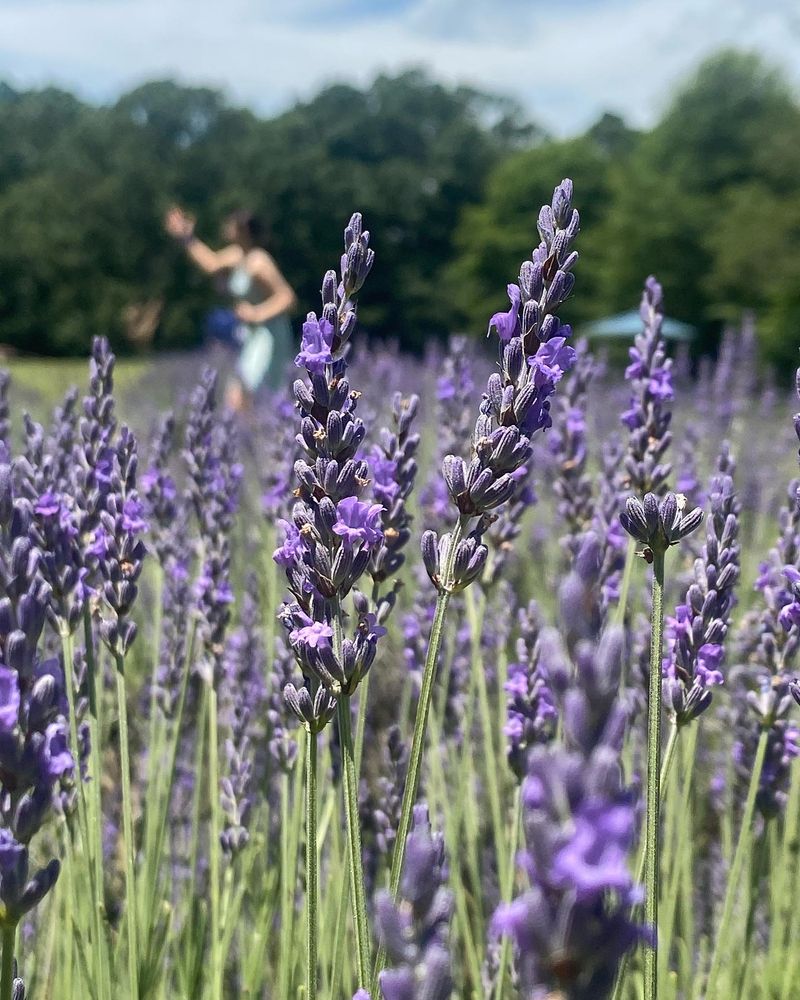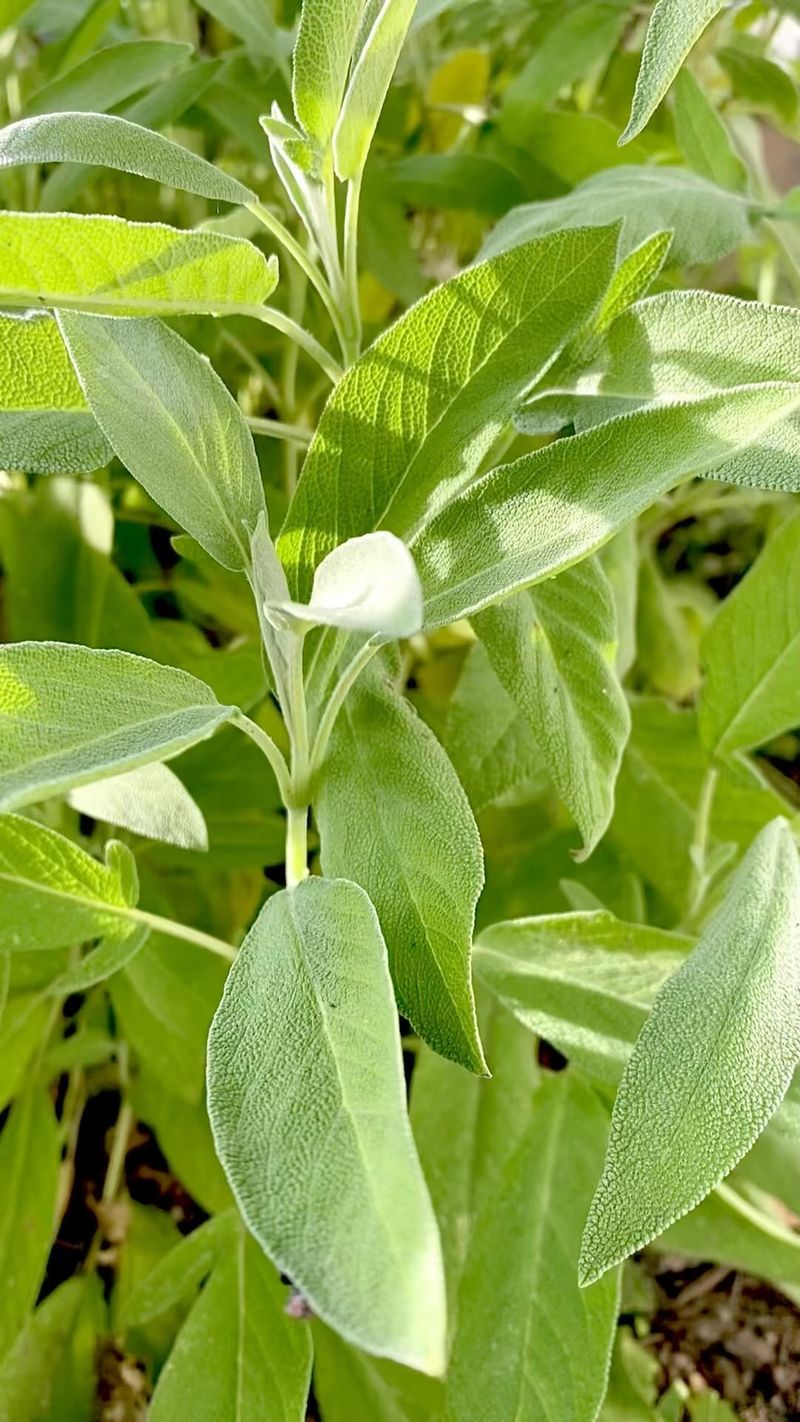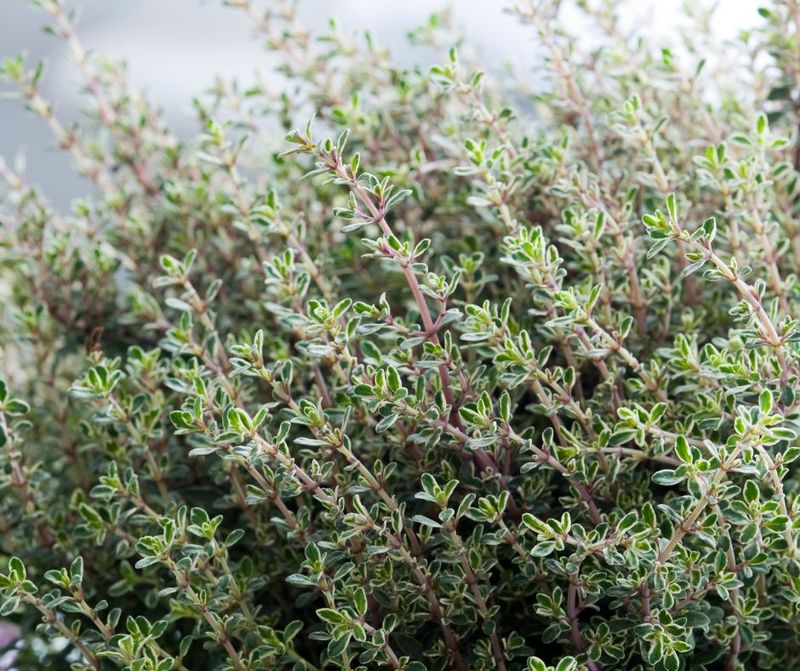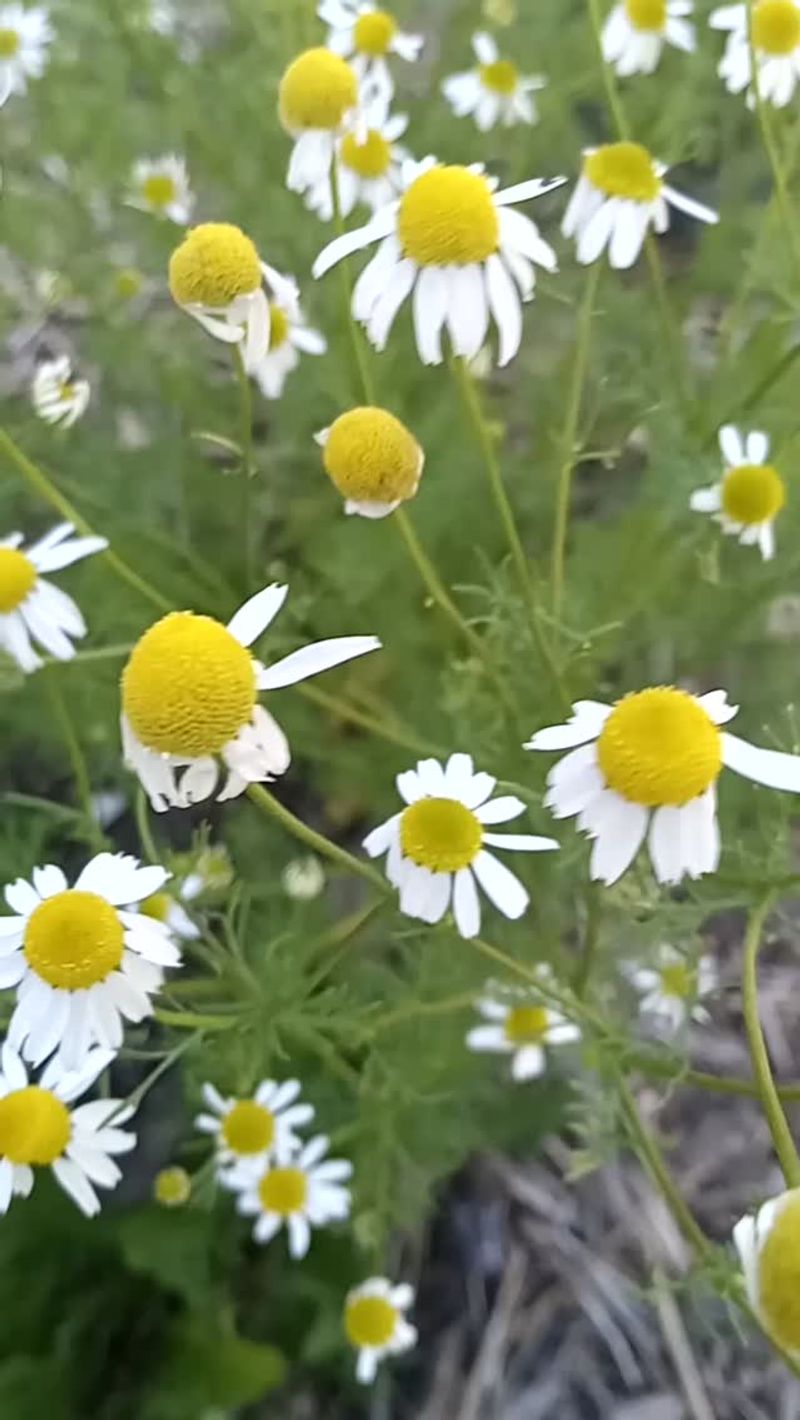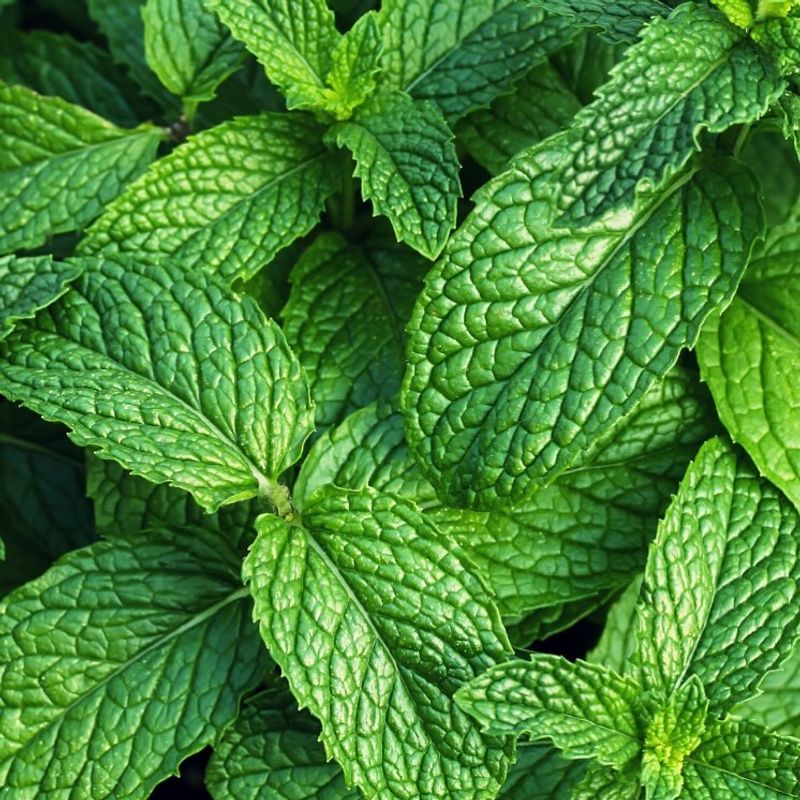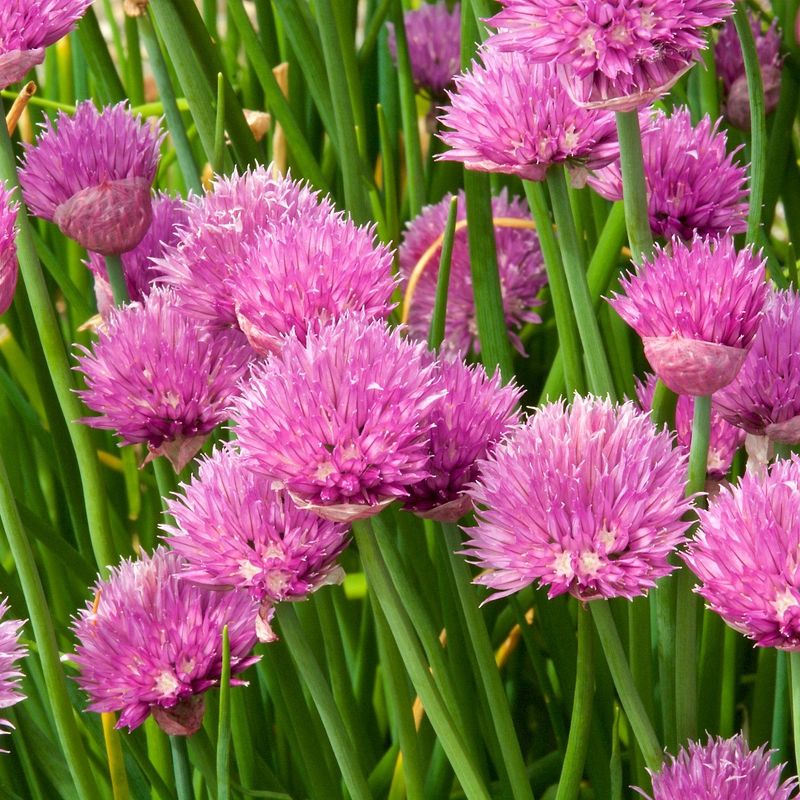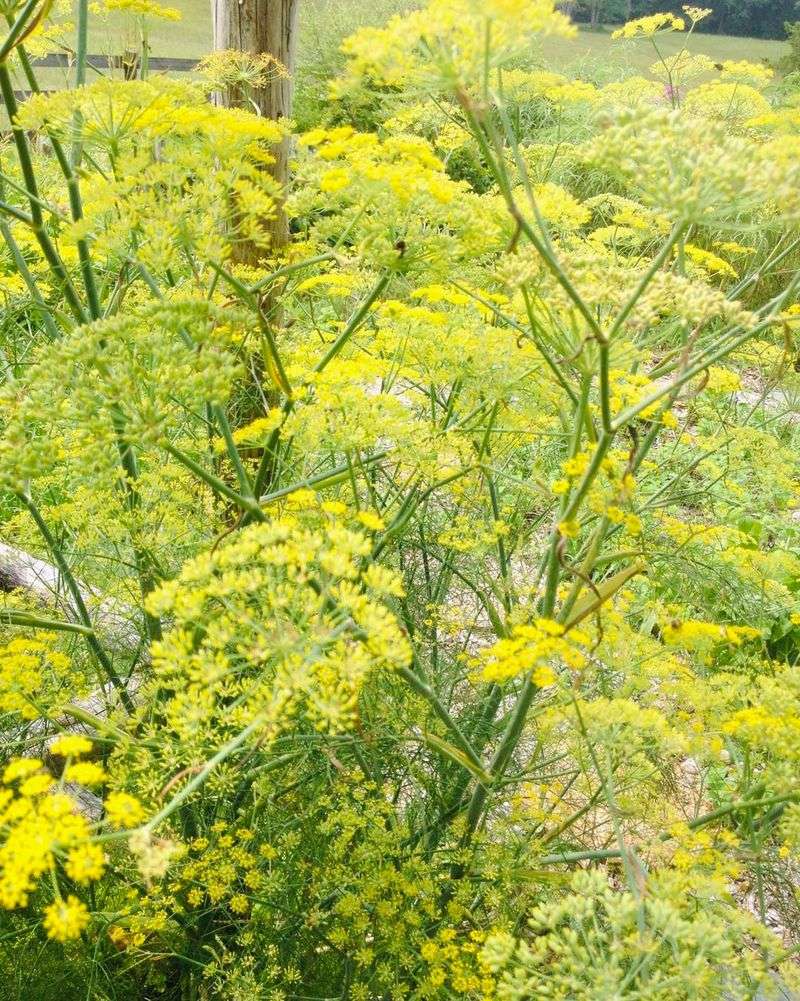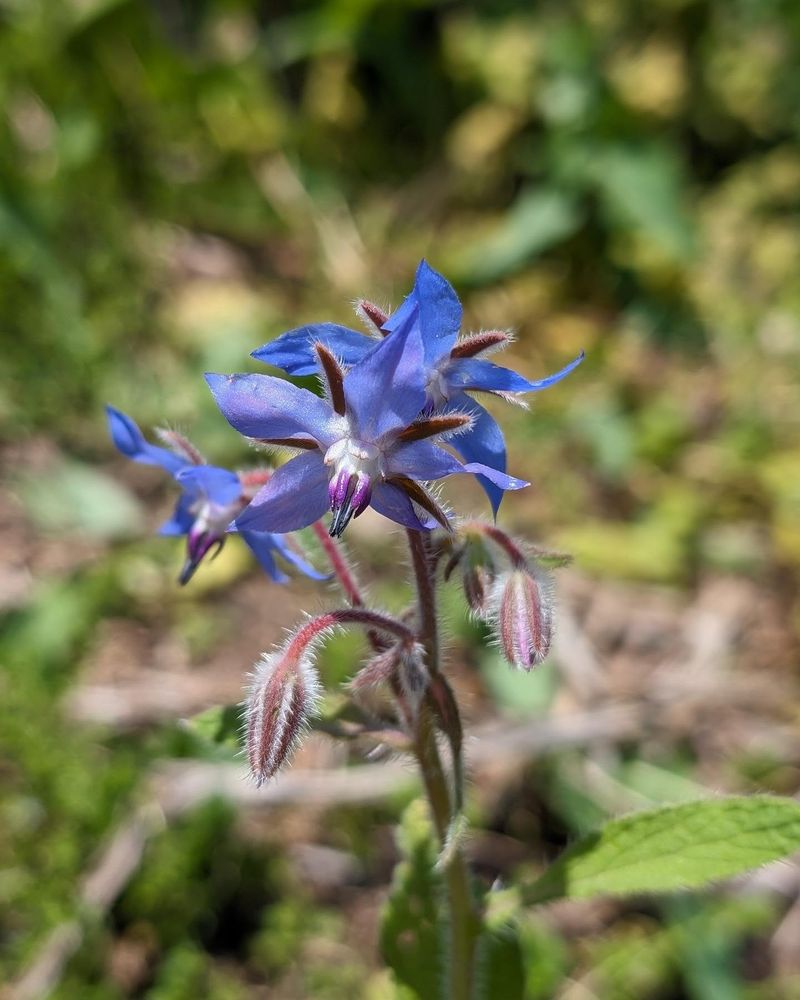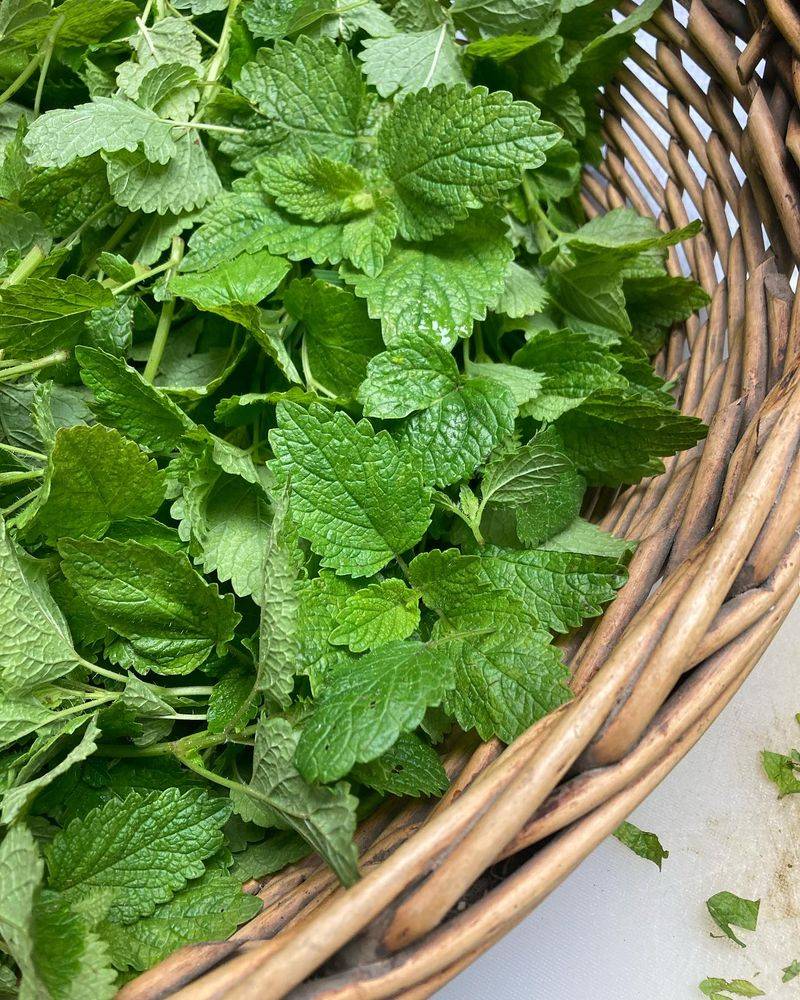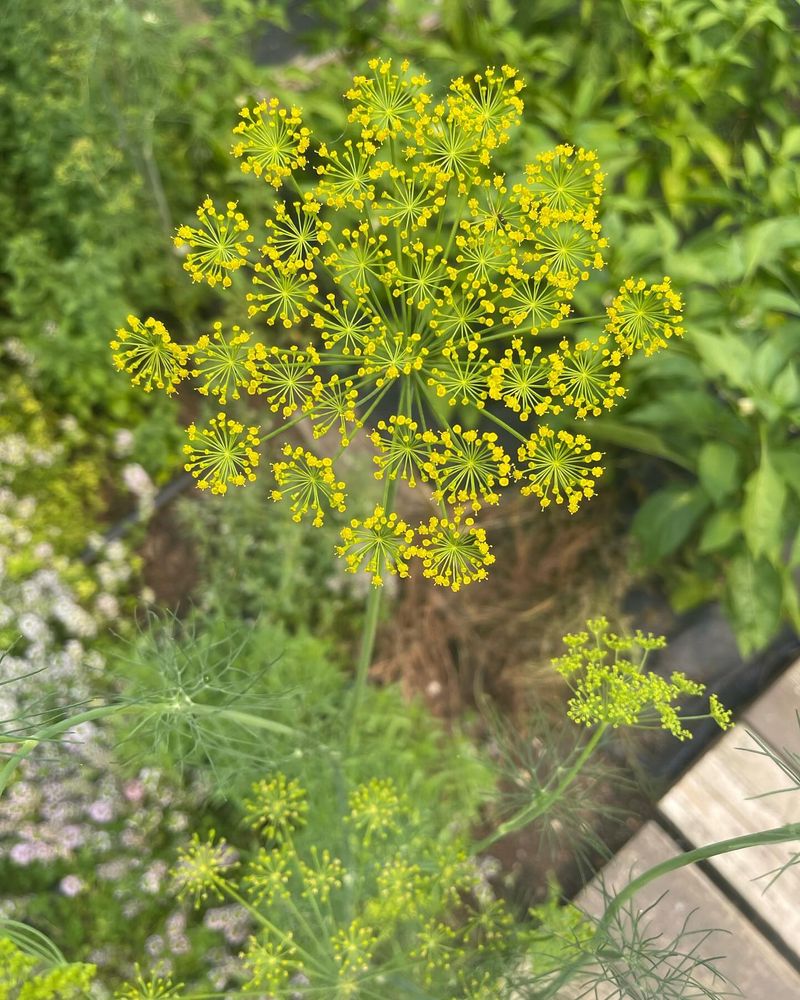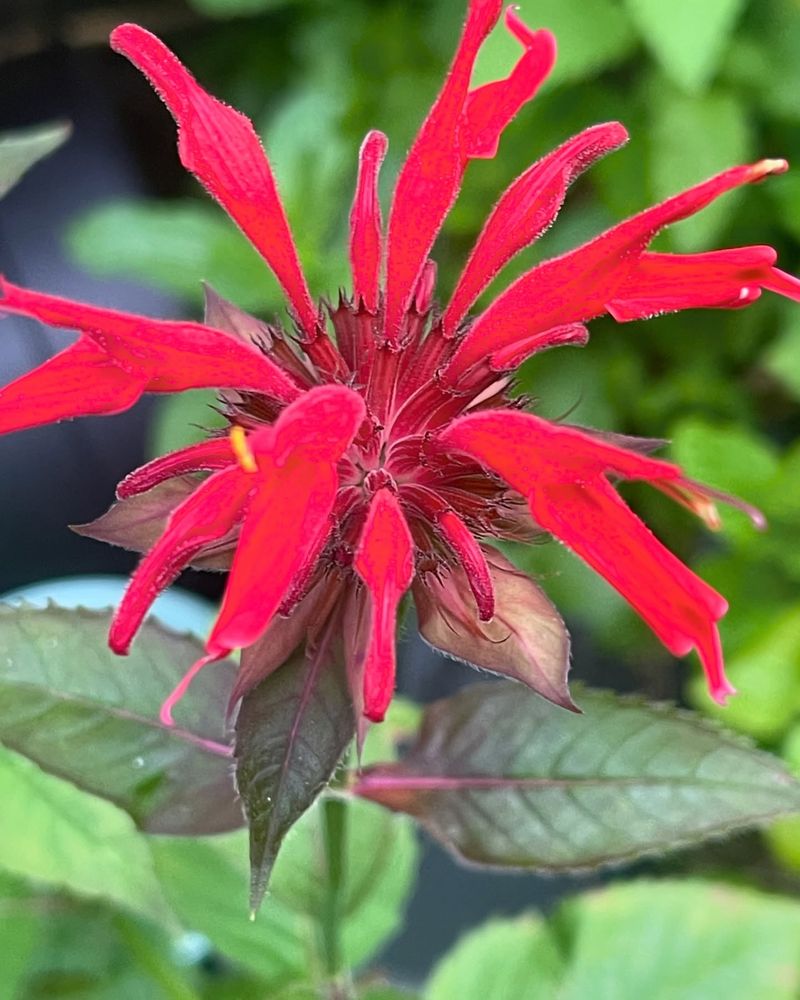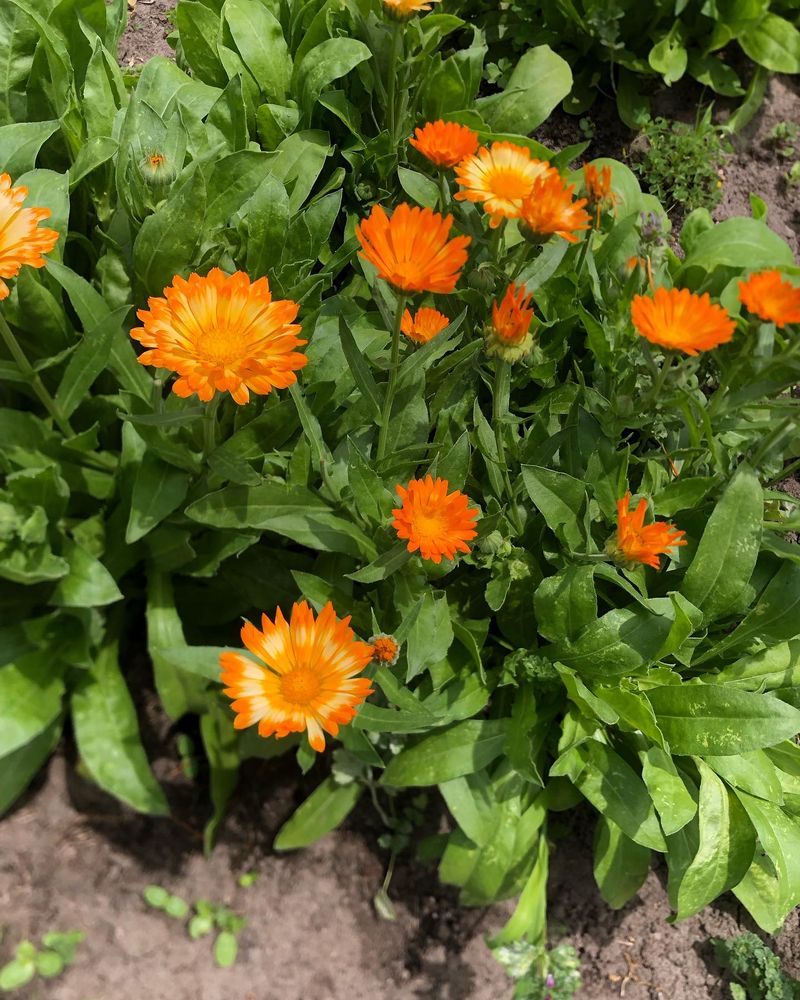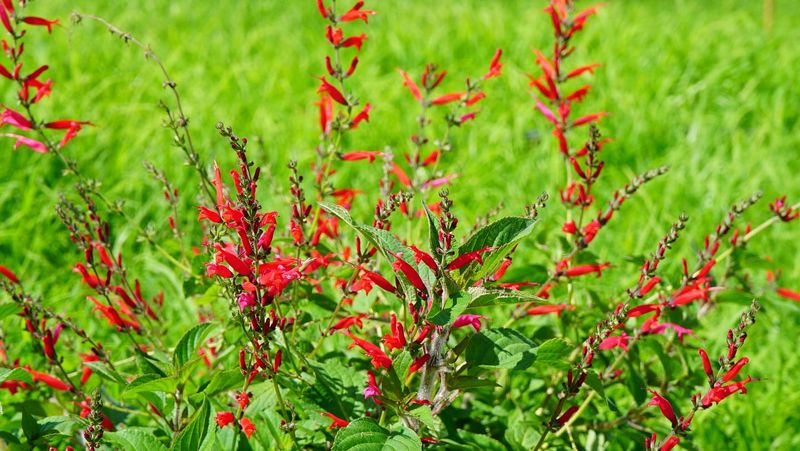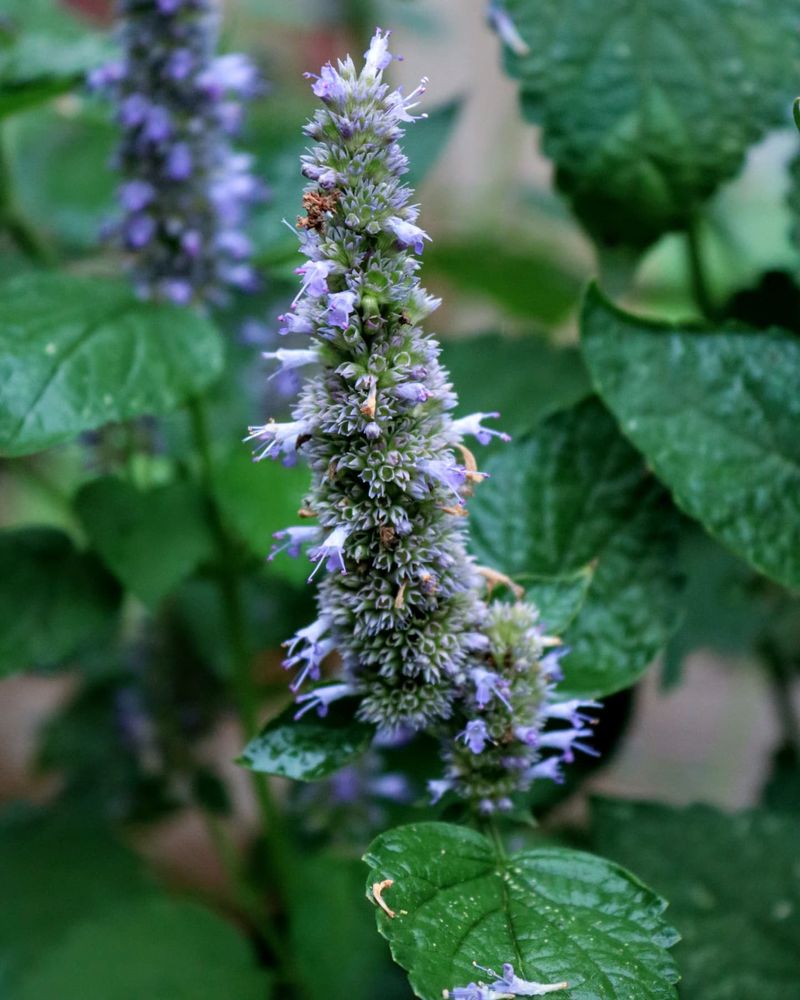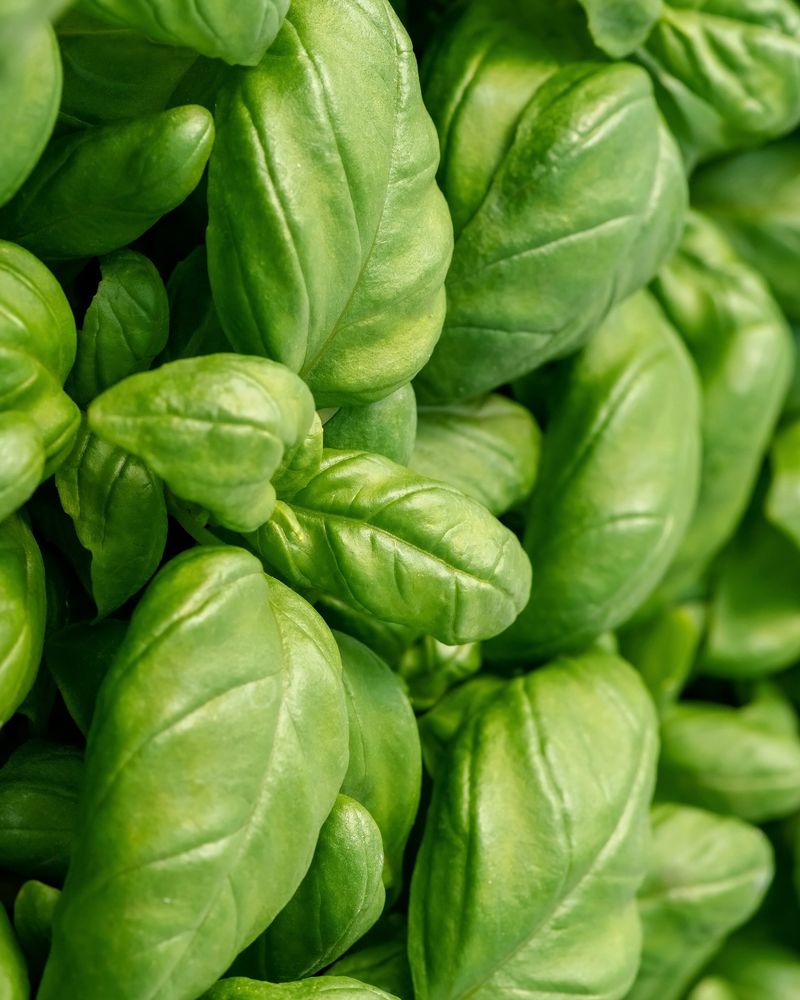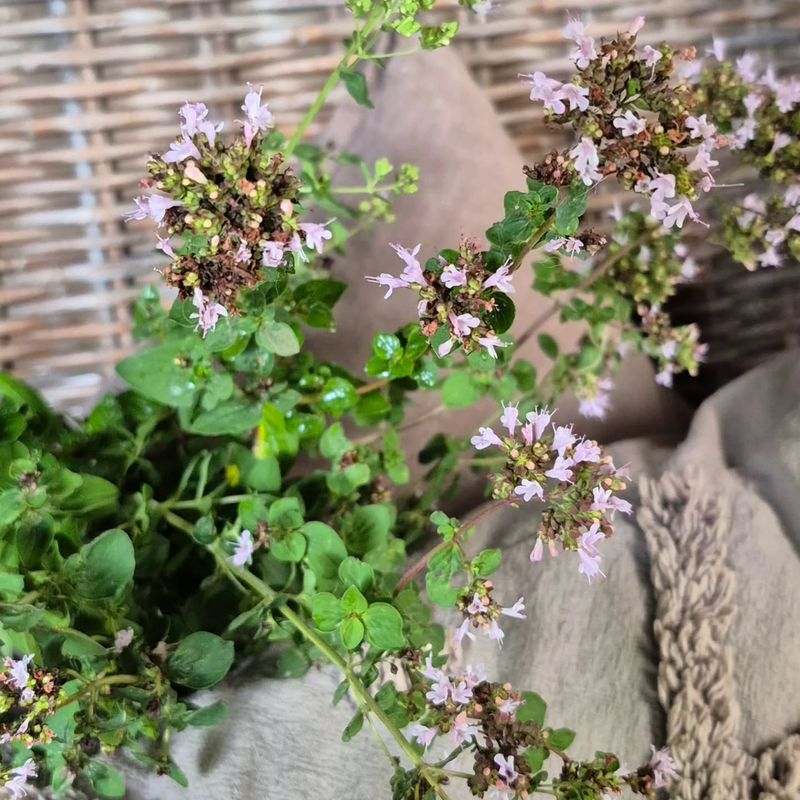Who says herbs have to stay tucked away in the veggie patch? Some of the prettiest plants in my garden are actually herbs—and they fit right in with the flowers. I love how they pull double duty, looking gorgeous and being useful in the kitchen.
A few might even surprise you with their colors, textures, or how many pollinators they call in. If you’re anything like me, you’ll want these charmers front and center.
1. Lavender
The purple spikes reach toward the sky like nature’s own air fresheners. Bees absolutely love these fragrant blooms that sway gently in summer breezes.
Plant lavender in sunny spots with well-drained soil to prevent root rot. Its silvery-green foliage creates beautiful contrast against other garden flowers, and you can harvest the blooms for sachets, teas, or cooking.
2. Rosemary
Walking past a rosemary bush feels like taking a mini vacation to the Mediterranean. The needle-like leaves release their piney scent with just a light touch.
Grow this woody perennial as a small shrub or even train it into topiary shapes. During spring, tiny blue flowers appear among the aromatic foliage, adding unexpected color while attracting pollinators to your garden beds.
3. Sage
Velvety gray-green leaves create a soft, touchable texture that garden visitors can’t resist. The purple, pink, or white flower spikes appear in summer, standing tall above the foliage.
This drought-tolerant herb works beautifully as a garden border. Different varieties offer various leaf colors from purple to tricolor, making sage as decorative as it is useful in both the kitchen and traditional remedies.
4. Thyme
Tiny leaves form lush mats that spill over garden edges or between stepping stones. When stepped upon, the leaves release a spicy-sweet aroma that enhances the garden experience.
Low-growing thyme varieties make excellent ground covers in sunny spots. The miniature flowers in white, pink or purple attract beneficial insects while adding delicate beauty to rock gardens or the front of flower borders.
5. Chamomile
Delicate daisy-like flowers dance above feathery foliage, creating a meadow-like charm. Children especially love the apple scent that wafts up when you brush against the plants.
This easy-growing herb self-seeds readily, creating natural drifts through the garden. The white petals with yellow centers blend beautifully with cottage garden flowers while providing material for calming teas and natural remedies.
6. Mint
Bright green leaves practically glow in partly shaded garden spots where other plants struggle. The refreshing scent fills the air whenever you brush past or harvest sprigs for summer drinks.
Contain this vigorous spreader in pots sunk into the ground to enjoy its beauty without garden takeover. The small purple or white flower spikes attract butterflies while adding vertical interest to garden beds or container arrangements.
7. Chives
Round purple pom-pom blooms hover above slender green stalks like lollipops in the garden. Bees and butterflies flock to these edible flowers that taste as good as they look.
Growing in tidy clumps, chives create neat borders or accents in flower beds. The grass-like foliage stays attractive all season, and the blooms can be dried for indoor arrangements or used fresh to add color to summer salads.
8. Fennel
Feathery fronds wave like green clouds above sturdy stems, adding airy texture to garden beds. The anise scent attracts beneficial insects including the spectacular swallowtail butterfly caterpillars.
Bronze varieties offer striking color contrast against traditional garden flowers. The flat yellow flower heads later develop into seeds for cooking, while the height (up to 5 feet) creates dramatic backdrop for shorter flowering plants.
9. Borage
Star-shaped blue flowers dangle like little jewels among fuzzy, cucumber-scented leaves. The edible blooms taste surprisingly sweet with a mild honey flavor that delights garden visitors.
This easy annual reseeds itself year after year without becoming invasive. The hairy stems and leaves create interesting texture, while the true-blue color is rare in the garden world, making borage a standout companion for roses and other traditional flowers.
10. Lemon Balm
Heart-shaped leaves release an uplifting citrus scent whenever the wind blows or you touch the plant. Morning dew intensifies the fragrance, making garden strolls a sensory delight.
Tiny white flowers appear in summer, attracting beneficial insects to your garden. The bright green color lights up shady spots, while the relaxing lemony aroma has been used for centuries to reduce stress – making this herb both beautiful and therapeutic.
11. Dill
Airy, thread-like foliage creates a delicate cloud effect in the garden, moving gracefully with every breeze. The chartreuse flowers form flat umbels that resemble little yellow fireworks.
Butterflies, especially swallowtails, lay eggs on dill plants, bringing extra life to your garden. The tall stems (2-3 feet) add vertical interest among shorter flowers, while the anise-like scent creates another layer of garden enjoyment beyond just visual beauty.
12. Bee Balm
Crown-like whorls of scarlet, pink, or purple flowers sit atop square stems like nature’s own fireworks. Hummingbirds dart from bloom to bloom, putting on a show for anyone lucky enough to be watching.
The minty-oregano scent fills the air when leaves are brushed against. Native to North America, this showy herb (also called monarda) creates dramatic focal points in perennial borders while attracting beneficial pollinators throughout its long summer blooming period.
13. Calendula
Sunny orange and yellow blooms open like miniature sunbursts throughout the growing season. The slightly sticky stems carry a distinctive resinous scent that many gardeners find pleasantly earthy.
Often called pot marigold, this easy-growing annual produces flowers continuously if deadheaded regularly. The edible petals brighten up salads while the plant itself has been used for centuries in healing salves – beauty and function perfectly combined in one cheerful package.
14. Pineapple Sage
Crushing a leaf releases an unexpected tropical pineapple scent that always surprises garden visitors. Late in the season, brilliant red tubular flowers emerge, creating a dramatic display just when other plants are fading.
Hummingbirds can’t resist the nectar-rich blooms that appear in fall. The bright green leaves create lush foliage all season long, making this tender perennial a standout in both herb gardens and ornamental borders even before flowering begins.
15. Anise Hyssop
Spikes of tiny lavender-blue flowers rise above aromatic foliage, creating vertical interest in the garden. Brushing against the leaves releases a sweet licorice scent that mingles wonderfully with other garden fragrances.
Butterflies and bees gather around the long-blooming flower stalks from midsummer to fall. The upright growth habit (2-4 feet tall) makes this North American native perfect for the middle or back of flower borders, where it combines beautifully with coneflowers and other prairie-style plants.
16. Basil
Glossy leaves catch the sunlight, creating bright spots of green, purple, or variegated color in the garden. The spicy-sweet scent wafts through the air on warm days, making garden work feel like a culinary adventure.
Many varieties offer different leaf shapes, sizes, and colors for design flexibility. If allowed to flower, the delicate white or purple blooms attract beneficial insects while adding another texture dimension to ornamental beds or container plantings.
17. Oregano
Tiny pink or white flowers cluster above spreading mounds of aromatic leaves, creating soft carpets of color. Bees buzz happily around the blooms throughout summer, adding movement and life to garden borders.
The low-growing habit makes oregano perfect for garden edges or spilling over walls. Some varieties offer golden or variegated foliage that brightens up the herb garden while the spreading nature helps suppress weeds naturally around more upright garden plants.

